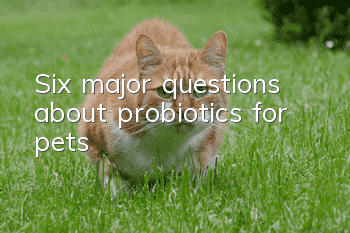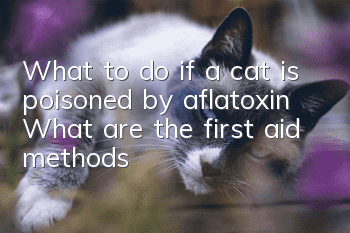Six major questions about probiotics for pets!

1. Why can probiotics help intestinal health?
There are not only good bacteria in the intestines, but also harmful bacteria.
Probiotics will form a "biofilm barrier" in the intestines, which can drive away harmful bacteria, resist the invasion of pathogens, and maintain the balance of the intestinal microecology.
Therefore, probiotics can help maintain intestinal health and exert their effects.
2. Is the more probiotics the better?
no.
Probiotics can only exert their effect if they reach the intestines alive.
If the probiotics cannot withstand gastric acid and all the probiotics reach the intestines are "dead" probiotics, then consuming more probiotics will have no effect.
Therefore, the greater the number of probiotics, the better.
3. How old can pets start taking probiotics?
The sooner you use it, the better.
Because puppies and cats are just born, their intestines have just begun to be colonized by bacteria, and the intestinal microecological environment is not yet balanced.
At this time, supplement them with probiotics to help establish the intestinal microecology, protect puppies and cats from interference from other problems, and ensure their health.
4. Will long-term use of probiotics cause dependence?
Won't.
Long-term consumption of probiotics can continuously maintain the dominance of beneficial bacteria in the intestines, allowing the probiotics to achieve their highest effect and consolidate the health of the body.
If you stop using probiotics, the intestinal flora will only slowly decrease to the most basic state before taking probiotics.
5. Why is PA-5051 probiotic resistant to gastric acid?
PA-5051 is a plant-based probiotic that is selected from nature. Compared with animal-based probiotics, it has stronger acid resistance, higher survival rate and stronger colonization ability after entering the intestinal tract.
Experiments can also prove that PA-5051 probiotics are resistant to gastric acid.
When dogs and cats are fasting, the pH value of gastric acid is between 1.5-2.0.
As shown in the figure, PA-5051 probiotics can still survive in an environment with a pH value of 1.5, while Lactobacillus acidophilus commonly used on the market is completely invisible in an environment with a pH value of 2.0.
Experimental data source: (Mizutani W., Yamasaki R, Lin, JJ, Kuki M, and Kato G. 2007. Pediococcus-an unique probiotics we use as a novel GI supplement. Annual Meeting of JBVP. 3-269-3-272)
6. PA-5051 probiotics can be used together with antibiotics. What is the difference between PA-5051 probiotics and drug-resistant bacteria?
Drug-resistant bacteria refer to drug-resistant pathogenic bacteria. Microorganisms that develop resistance to corresponding antibiotics after long-term antibiotic selection are collectively referred to as drug-resistant bacteria.
(Simply put, after bacteria come into contact with drugs many times, their sensitivity to drugs is reduced or even disappears, resulting in the drug's efficacy against drug-resistant bacteria being reduced or even ineffective, forcing humans to find new methods to fight microbial infections.)
PA-5051 probiotics are not drug-resistant bacteria, they are just more tolerant of the killing power of antibiotics. The amount of antibiotics generally used has not reached the amount that can kill a large amount of PA-5051 probiotics.
And experiments conducted jointly by universities in the United States and Japan show:
92 dogs with dyspepsia had no adverse reactions after using it alone or in combination with antibiotics, and all digestive diseases recovered. Therefore, the efficacy and safety can be assured.
Source of experimental data: (Mizutani W., Yamasaki R, Lin, JJ, Kuki M, and Kato G. 2007. Pediococcus-an unique probiotics we use as a novel GI supplement. Annual Meeting of JBVP. 3-269-3-272 )
Therefore, PA-5051 probiotics can be used together with antibiotics.
- What does "little milk cat" mean? How old is a cat?
- Kitten doesn't eat or drink and foams at the mouth
- How many litters can an Exotic Shorthair cat have in a year?
- Can cats eat chicken breast?
- Why is the "British short" more popular than the "American short"?
- Why is my cat still barking and peeing everywhere after being neutered?
- Why is it not recommended to buy short-legged cats? Why is it not recommended to buy short-legged cats?
- The cat’s teeth chattered loudly
- How to tell if a cat is sick? What are the signs of a cat being sick!
- What should I do if my kitten has eye mucus?



